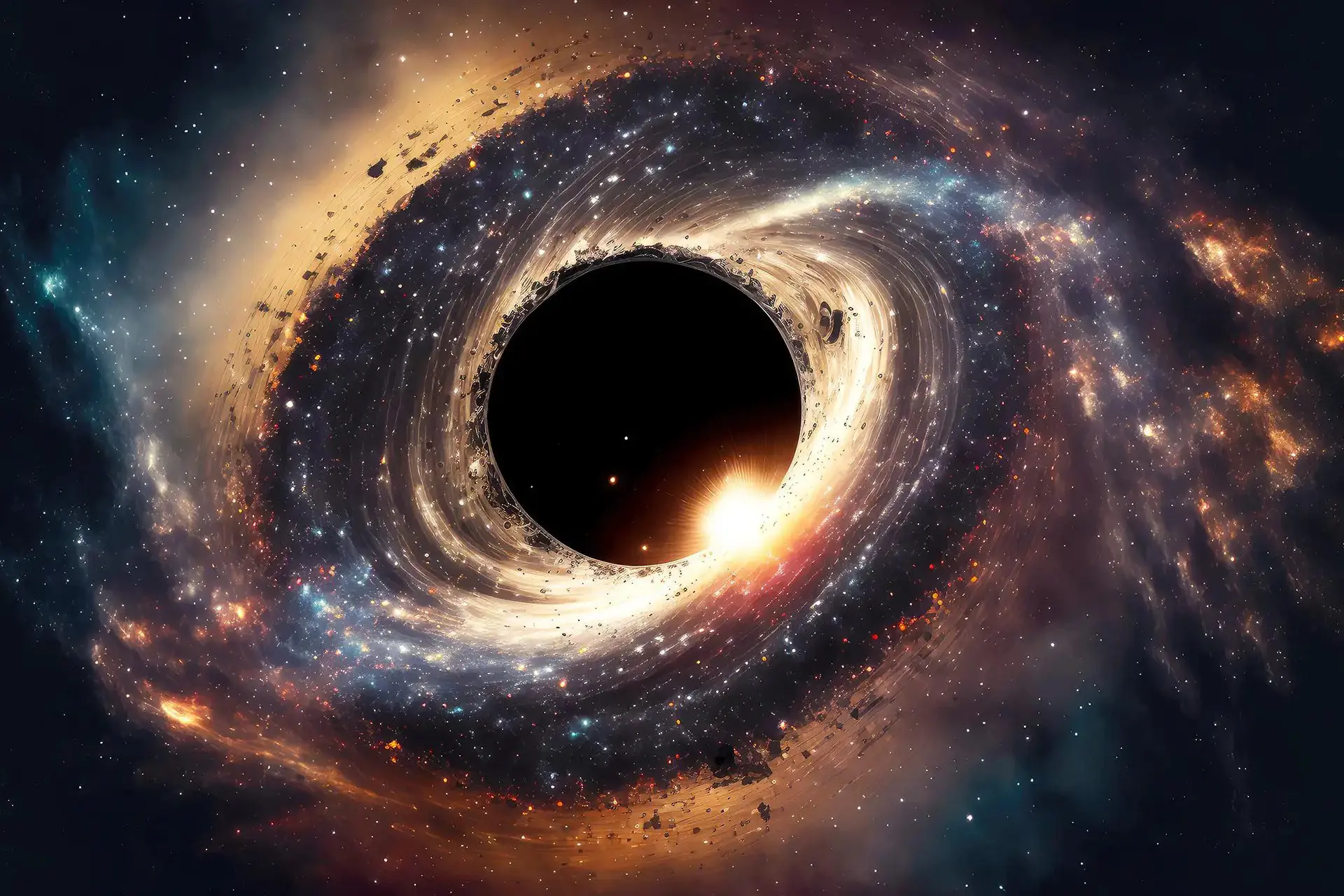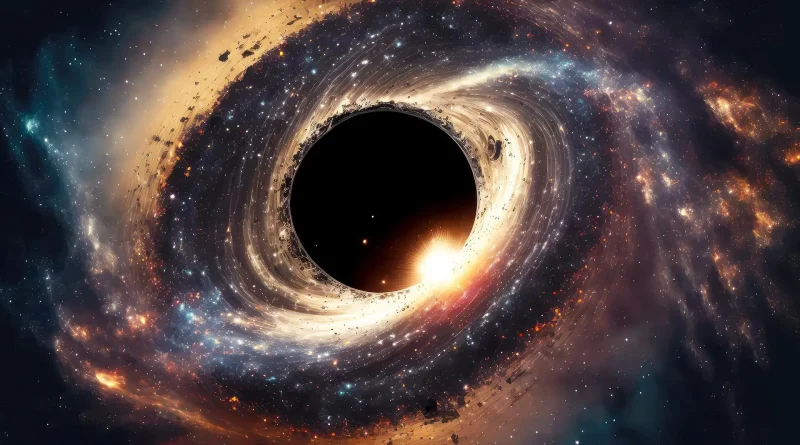Discovering indirect evidence of the existence of dark matter around black holes.

Scientists have concluded that the deceleration of two stars in orbit around black holes is due to the gravitational pull of dark matter. This indirect evidence of a significant amount of invisible dark matter close to black holes is a major breakthrough in dark matter research, pending confirmation. Dark matter makes up about 85% of all matter in the universe, yet is virtually invisible to astronomers because unlike the matter that makes up stars, planets and other ordinary objects, it does not interact with light and cannot be directly observed. Fortunately, dark matter has a gravitational interaction and researchers infer its existence through its gravitational effects on ordinary matter. According to Live Science, a group of scientists at the Education University of Hong Kong used binary black hole systems to observe dark matter in a new study.
A visualization of a supermassive black hole surrounded by a glowing accretion disk and a wall of cosmic dust. Dark matter, an invisible substance, may exist around cosmic giants like this black hole.
Based on observations, the orbital speed of A0620-00 and XTE J1118+480 stars decreases by approximately one millisecond per year as they move around their accompanying black holes. Researchers have concluded that the speed reduction is due to the dark matter surrounding the black holes, creating significant friction and pulling the stars while in orbit around these massive black holes.
Using simulations of black hole systems, researchers applied an accepted cosmological model called the dark matter dynamical friction model. This model predicts the loss of angular momentum for celestial bodies that interact gravitationally with dark matter. Based on simulations, the observed decay rate is 50 times greater than theoretical estimates (0.2 milliseconds per year) for non-dark matter binary systems. According to Chan Man-ho, head of the environmental science and research department at EdUHK:
This is the first study to apply the dynamical friction model to evaluate and prove the existence of dark matter surrounding black holes. –
The research results published on January 30 in the Astrophysical Journal support an old theory in cosmology that suggests black holes can swallow up adjacent dark matter. Thus, dark matter is redistributed around black holes, and its density increases near them to the point that it can affect the orbits of celestial bodies around them.
Chan also explained that previous efforts to investigate the dark matter surrounding black holes were based on the emission of high-energy light in the form of gamma rays or oscillations in space known as gravitational waves. These rays are the result of the collision and merger of black holes; a rare event in the world that can keep astronomers collecting sufficient data for years.
The new research offers a novel way of examining the distributed dark matter around black holes to scientists. The EdUHK group is hunting for binary black hole systems for their future research. Chan says this study provides an important path for future dark matter research. There are at least 18 binary systems in the Milky Way alone that could be our research subjects and provide rich information that reveals the secret of dark matter.




